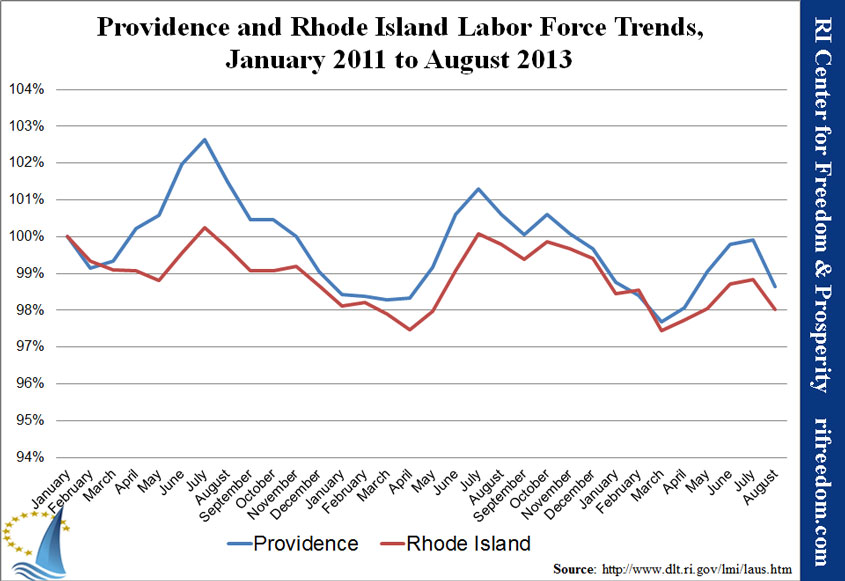Bell’s Toneless Chime on Providence Austerity
Far be it from me (especially given a packed schedule) to insert myself between liberal gubernatorial candidate Providence Mayor Angel Taveras and the progressives at RI Future. It really, really isn’t high on my list to take one side or the other in this particular dispute, and I sincerely hope that by my chiming it will resonate a little more clearly that I’m concerned first and foremost about understanding what’s actually going on in Rhode Island, because as a purely political matter, I’d be best advised to let this intra-lefty cacophony rattle on.
On the aforementioned blog, Sam Bell insists that Taveras was “deceptive” to state that unemployment in his city had fallen from 13.7% when he took office to 12%. The reason, Bell argues, is that it was a comparison of January 2011 (which is a high month for seasonally unadjusted unemployment) with October 2012, when unemployment is typically rather low.
Now, it must be said that the federal Bureau of Labor Statistics undertook a major revision at the state and national levels, so that may have changed the Providence-specific numbers, too, thereby retroactively making something undeceptive out of an outright falsehood from the mayor, but a look at the numbers as they now stand reveals no deception. January 2011 unemployment in Providence was 13.6%, and January 2013 unemployment (just after Taveras’s statement) was 12.1%, which was up from the low-to-mid elevens. I’d question the amount that the new mayor deserves credit for that result, but there it is.
Let’s move on, though, to the claim of Bell’s in which I have much more of an intellectual and ideological interest. Posting a chart that shows the comparative unemployment trends for Providence and Rhode Island since Mayor Taveras took office, Bell writes:
The beginning of Taveras’s tenure was marked by a massive surge in the unemployment rate in the spring. In the fall it fell, nearly matching the RI rate. Next spring it surged far above the RI again, and next fall it fell again. Now it’s once again rising above the RI rate. This pattern of surging unemployment in the late spring is the classic signature of massive fiscal austerity, where public sector layoffs accelerate as the end of the fiscal year approaches. In a normal economy, the peak from private sector layoffs in January will be much bigger than the public sector layoffs peak around June. In the austerity-laden Rhode Island economy, those peaks are nearly the same size. But in Providence, the public sector layoffs peak completely swamps the January one. That’s the sign of truly extreme austerity.
To put it gently: This analysis is built on an entirely fabricated version of reality.
Bell neglects to consider that there are two components to the unemployment rate: those who say they are unemployed and those who say that they are employed, which added together make up the denominator of the equation as the total labor force. Here’s a version of Bell’s chart based on survey respondents who say that they are “employed.”
Not only is there no “accelerating” season of layoffs in late spring, but Providence and Rhode Island are very much in sync, except during the summer months in which tourism centers like Newport explode with employment.
So how does unemployment do what Bell finds it doing? Well, here’s the chart again, this time showing the labor force:
What Providence sees in late spring and early summer is not a big dip in employment, but a big surge in people looking for work. Now, why do you suppose a city with a large number of colleges and a high proportion of working class teenagers would outstrip the rest of the state in people looking for work during this time of year?





